Unlike St. Thomas and St. Croix, St. John does not have any sizable areas of impressive Danish Colonial architecture.
The island does, however, have buildings of great historical interest. Some of these structures are humble or in a state of disrepair, and as generations pass and memories fade, they are in danger of destruction by natural forces or the march of human progress.
Two abandoned historic schoolhouses, which were once sites of vibrant community activity on St. John, are now the focus of a renewed effort to ensure their preservation.
One is the original building among the complex of structures that became the Guy Benjamin School in Coral Bay.
Named the Coral Bay School when it was built and then renamed the Benjamin Franklin School, it served the children of Coral Bay from around 1935 until it was closed in 2014 because of low enrollment. The entire school campus was heavily damaged by Hurricane Irma in 2017.

The second building is less well known. The East End School, which perches on an overlook near Hansen Bay, dates back to the mid-1800s. The building was closed as a school in 1959 when its students were sent to attend the Coral Bay School, but it was used as a retreat by government officials through the 1980s. It, too, has suffered hurricane damage, but the thick walls have held up, a new roof was put on, and the building is stable.

The Coral Bay Community Council has received a grant to begin the process of listing these two buildings on the National Register of Historic Places, a designation that can open sources of funding for restoration.
On Feb. 15, the Coral Bay Community Council hosted an online town meeting to offer the public an opportunity to share photos, recollections, and stories about these buildings. The goal is to gather information that can be used to document their significance for an application to the National Park Service, which oversees the National Register of Historic Places.
The deadline for the grant to support the application is due by the end of March, so the Coral Bay Community Council is hoping to get as much information as possible within the next couple of weeks.
Several people with ties to the East End of St. John spoke at the Feb. 15 meeting, eager to tell what they know of this independent community on the most remote part of St. John. And towards the end of the meeting, Melville Samuel, who taught at the school 70 years ago, shared some stories about his experiences there.
First to speak at the meeting was Khalid Nadir, the great-grandson of Oswald and Amelia (Testamark) George. Oswald’s family deeded the land to the Moravians to build the East End School, and Amelia taught at the school from 1898 to 1908.
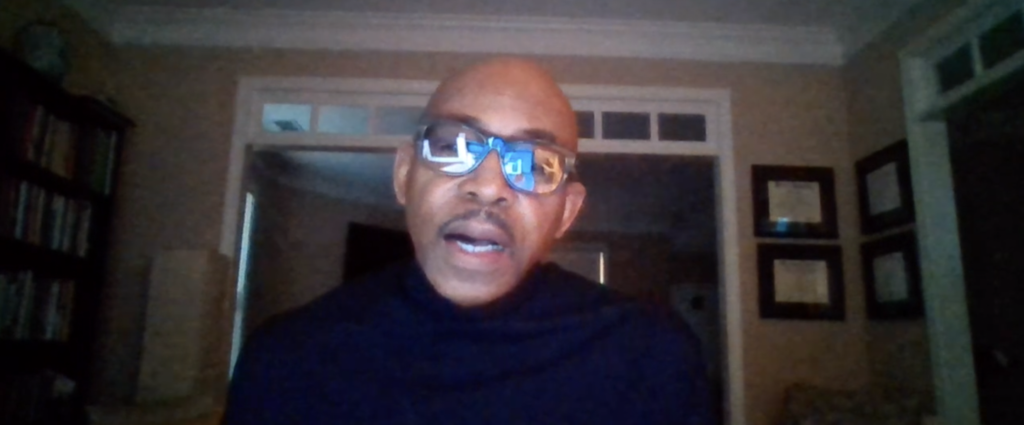
“Life on the East End was very hard in the 1890s,” Nadir said, but Amelia seized the opportunity to gain a profession. She was sent to Antigua in around 1893 by the Moravians to study for four years at a teacher’s college and returned to teach at the East End School, then known as the Emmaus Country School.
Amelia Testamark married Oswald George, a respected sea captain, and had a child, Evelyn, at the age of 35. When Evelyn went to New York and became ill with pneumonia, her parents joined her there and never returned to St. John. In New York, Amelia continued to teach and was active in the Garvey Movement.
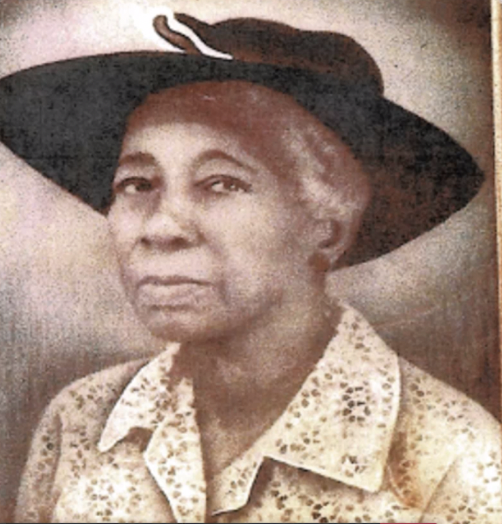
Nadir, who grew up in New York, remembers his great-grandmother Amelia as tall and kind. She played piano and sang opera. She taught him writing, penmanship, and methods of solving math problems. In addition to her own child, she raised her sister’s daughter, had numerous godchildren, and believed in “givishness” – “if anyone needed anything, they’d give it,” he said.
Nadir’s great-grandfather, Oswald George, was taught nautical skills and carpentry as a student by the Moravians. As a captain, he traded goods in the British Virgin Islands and transported workers to the Dominican Republic.

Oswald George had connections to the ancestors of the next speaker, Valerie Sims, who has been documenting the history of her family on St. John, St. Thomas, and the BVI through seven generations.
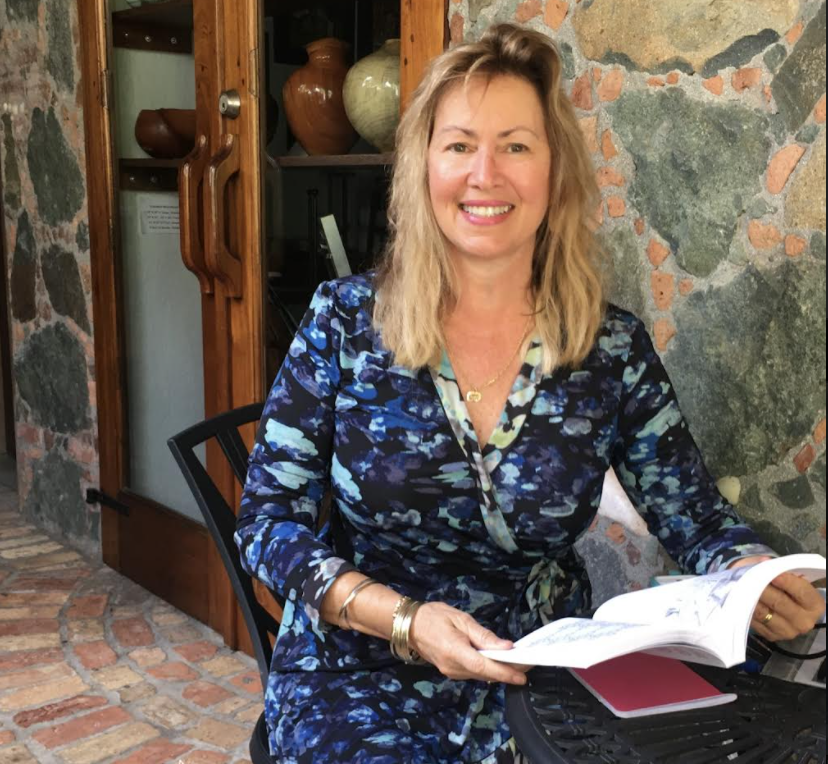
Sim’s great-grandfather, Herman Creque, bought land near Haulover Bay on the East End from Oswald George for $500, Sims said.
Sims was excited to discuss a postcard of picnickers at an event held on the East End of St. John on Whit Monday in June 1906.
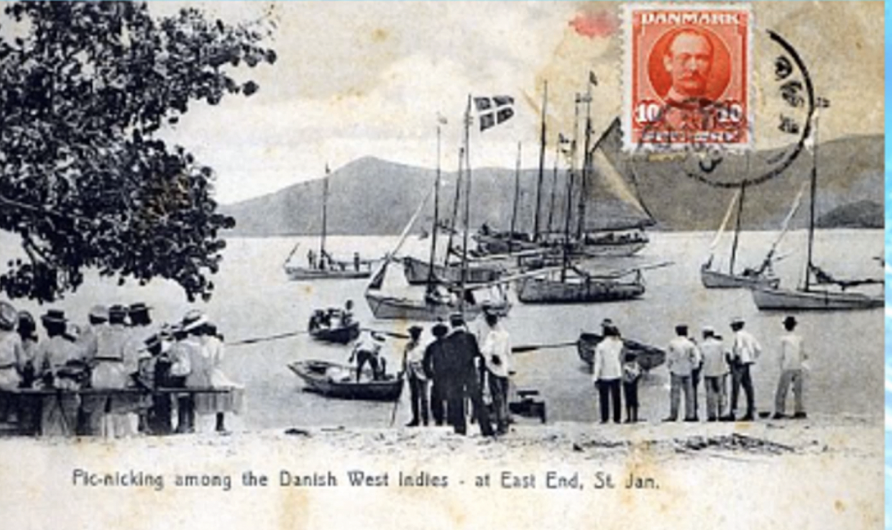
The gathering was held to celebrate the consecration of a newly-built cistern at the East End School, a major upgrade in infrastructure that assured a safe supply of drinking water for the community. Further details of the event are published on Sims’ website.
Sims said the Viking, a 91-foot schooner, sailed from St. Thomas for nearly five hours to bring 50 people to the event.
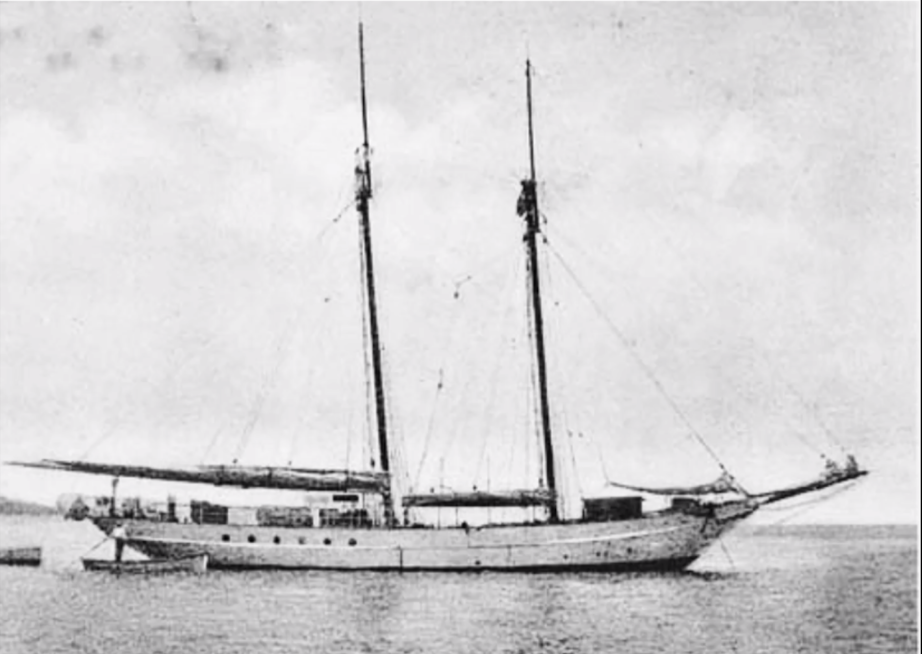
Sadly, the vessel only operated throughout the Virgin Islands for about five years; it sank off Great St. James in 1911, Sims said.
Denmark sold the Virgin Islands to the United States in 1917. Sims’ research shows that federal funds were used to repair the schoolhouses on St. John in the 1930s.
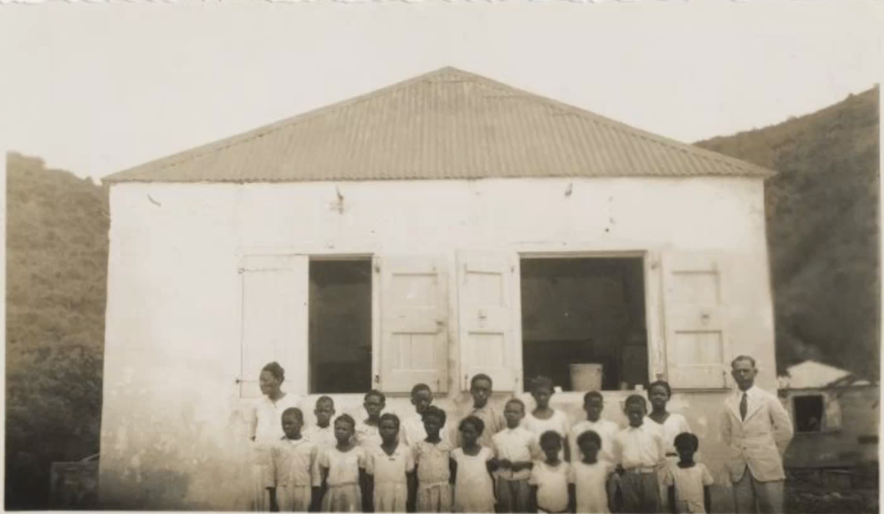
One person who is alive and can talk about his experiences at the East End School is Melville Samuel.
Samuel, who grew up near Cruz Bay, attended the Bethany School where Guy Benjamin was his first-grade teacher.
Samuel was recruited to teach at the East End School one month after he graduated from Charlotte Amalie High School in 1951.
Samuel’s teacher training consisted of one month’s observation at the Washington School on St. Thomas. He was then put in charge of 15 students ranging from grades 1-6 at the East End School. Fortunately, his great aunt was Clarice Thomas, the educator for whom a school building is named in Cruz Bay. “She taught me a lot,” he said.
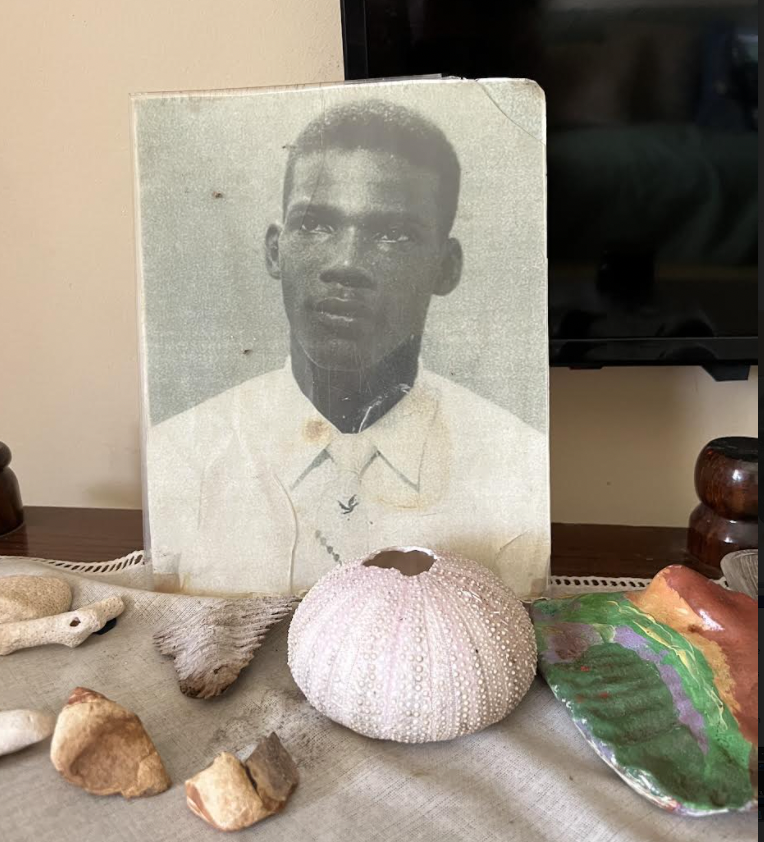
No one from the Education Department ever came out to the East End to evaluate his teaching skills, he said, but he had few problems.
“Children were very respectful in those days,” Samuel said. “I love children. It was very easy to teach them reading and math.” When he was a student at the Bethany School, his aunt and teacher, Clarice Thomas, used to keep a leather strap over her shoulder. “You were afraid of that strap. When you stepped through the door, it was business,” he said.
When he became a teacher, he, too, would occasionally use corporal punishment, but he said the students didn’t hold it against him. “I was very strict in the classroom, but when we went out to play, we had all the fun we wanted.”
Samuel lived near the school during the week, and on Fridays, he walked on a trail – a distance of nearly 12 miles – back to Cruz Bay. On Sundays, he walked the trail back to the East End. “There were no roads on St. John then,” Samuel said. “Everyone walked everywhere they went or rowed or sailed.”
During that time, Melville Samuel courted his future wife, Mercedes, who was from St. Croix, through correspondence. “I fell in love with her even before I met her,” he told the Source.
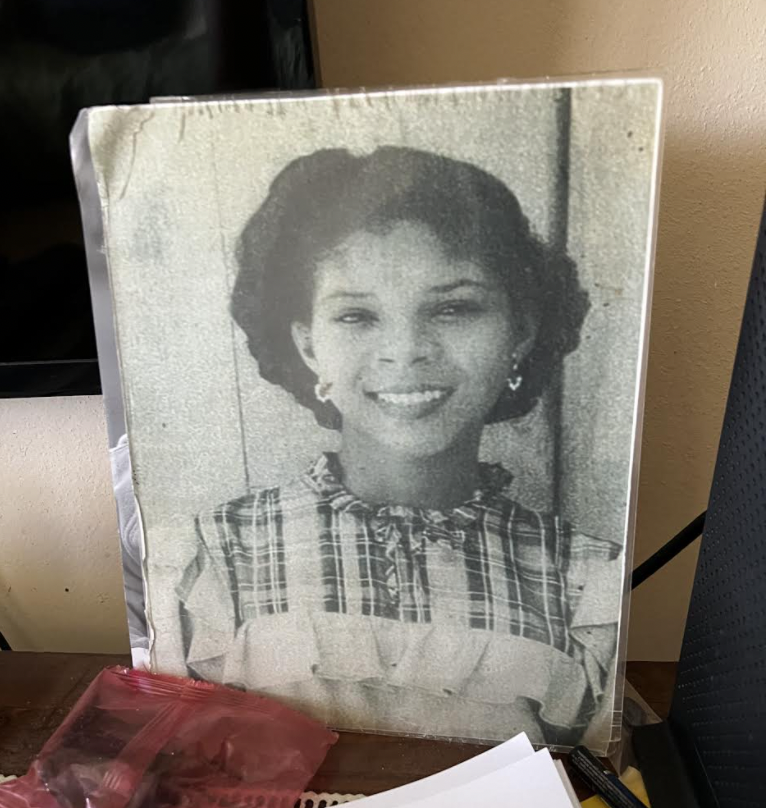
After two years at the East End School, Melville took a job at the Horace Mann School in John’s Folly, across Coral Bay, where he taught 39 children. Mercedes, his bride, took over his position as a teacher at the East End School.
Several times a week, Melville would borrow someone’s rowboat and row across Coral Bay to spend time with his wife.
After two years, the couple moved back to Cruz Bay, and Melville continued to teach for 28 more years at what is now the Julius E. Sprauve School.
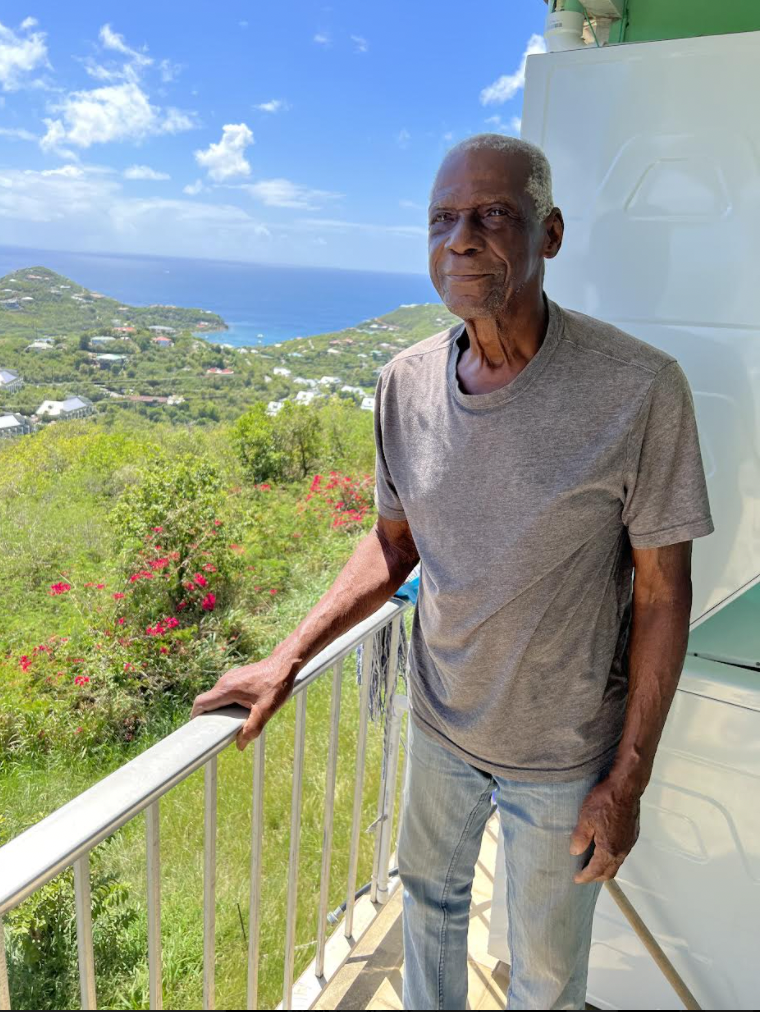
Although she did not attend the online meeting, Violet Sewer sent a photo of students at the East End School in 1957. She and her sister Lorrel are the two girls in the front row in red.

The Coral Bay Community Council is hoping others will step forward and share their photos and recollections of the East End and Guy Benjamin schools within the next couple of weeks in order to secure their spots on the National Register of Historic Places.
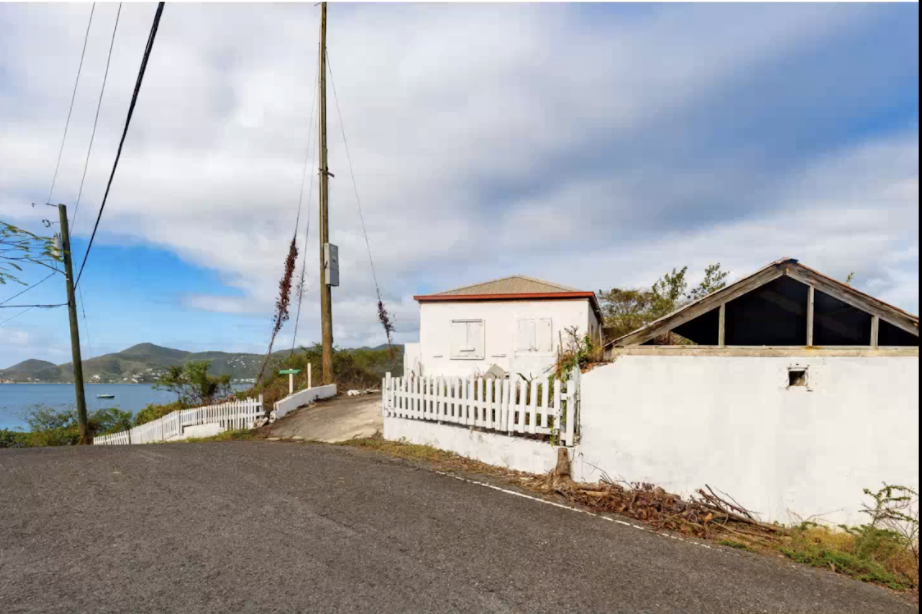
For further information, contact Shiloh Moates, an anthropologist who is working with the CBCC on this project, at 340-776-2099, or submit a comment through this link https://coralbaycommunitycouncil.org/historic-schoolhouses-in-coral-bay/.





